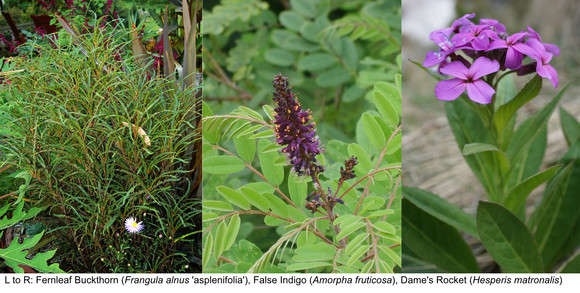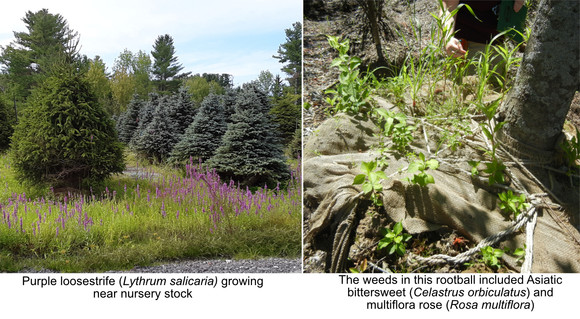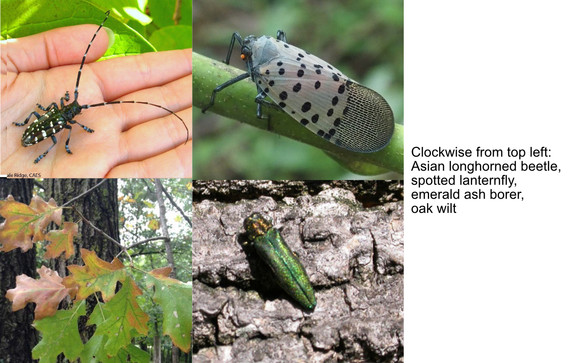Horticulture
In this issue:
This summer, inspectors have encountered several plants for sale that are on the prohibited invasive plant list. Unlike past incidents, the plants that we have found, Dame’s rocket (Hesperis matronalis), False indigo (Amorpha fruticosa) and fernleaf buckthorn (a variety of Frangula alnus), are some of the less familiar plants on the list. In each of these cases the business owner was either unaware the plants were in their inventory or that the plant was on the prohibited plant list. All the plants were removed from sale and properly disposed.

While we only occasionally encounter plants on the invasive plant list for sale, it is common for us to observe purple loosestrife, Japanese knotweed, Asiatic bittersweet and other invasive plants surrounding growing or retail sales areas. Allowing these plants to grow within the confines of the nursery increases the potential that seeds or other viable plant parts may find their way into pots and root-balls of plants that are for sale. This could result in a stop sale order being issued for infested plants.

There is no official list of best management practices to prevent invasive plants growing in and around nurseries from becoming hitchhikers in plants that are for sale. However, there are steps you can take to minimize the risk of spreading these pests.
-
Inspect root-balls on in-coming shipments for hitch-hiking plants. If you observe invasive plants, refuse the shipment and send the plants back to the supplier.
-
Scout around the edges of the nursery looking for invasive plants and control invasive plants when necessary. Keep in mind that each species may require different management tactics.
- Scout and control all weeds in growing and sales areas taking special notice and care to eradicate invasive plants.
-
Use nursery fabrics, or other barriers, in container growing and holding areas to prevent weed invasion.
- Maintain a weed-free area around field planted nursery stock.
- Use only weed-free growing media.
- Use only new containers or thoroughly clean used containers before reusing.
- Consider using a mulch or other surface cover to reduce or prevent weeds from growing in containers.
August is tree check month. Now is the peak time of year to see adult wood-boring insects, and the activity of a few other invasive pests. We encourage you and your customers to take a few minutes this month to look for signs of invasive pests such as Asian longhorned beetle, spotted lanternfly, oak wilt and emerald ash borer on your trees or other host plants.

We talk a lot about emerald ash borer and unfortunately, we have two updates on this pest. Recently, a report from a homeowner in Ogunquit led to the discovery of an EAB infestation. Ogunquit was not previously known to have any EAB present. The good news is that Ogunquit is in York County, which is already quarantined for EAB.
In early August we received a report that Lowe’s stores in Maine may be selling ash trees. Upon following up on the report we discovered that Lowe’s stores in Maine received a total of 40 ash trees from a nursery located in Connecticut, but the trees had been grown in Maryland then shipped in April to Maine by way of Connecticut. Twenty of the trees were shipped to stores outside the EAB quarantine area, a violation of state and federal quarantines. Unfortunately, the trees were sold before we received the report. Lowe’s is currently trying to help us locate the trees. The trees were inspected in Maryland last fall and no signs of EAB were observed at that time.
Whether you are in or outside the EAB quarantine area the Horticulture Program strongly discourages nurseries and garden centers from growing or selling ash trees. These plants are under significant pest pressure from EAB and will require treatment to survive in the landscape as EAB spreads throughout the state. There are currently no known EAB resistant cultivars of ash on the market.
|